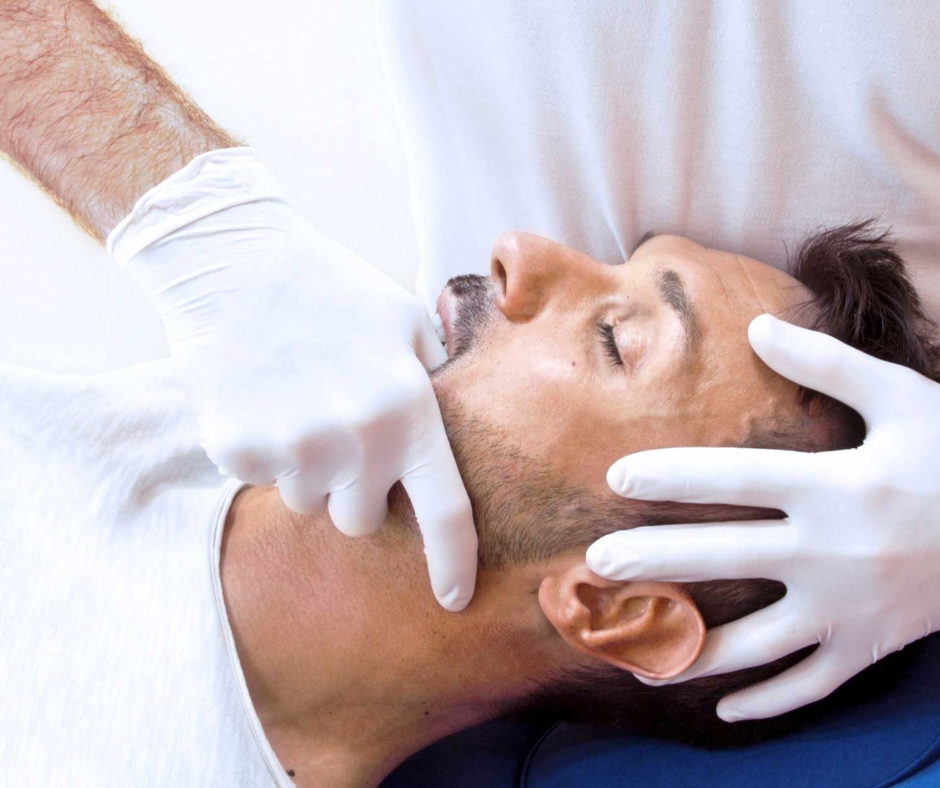Exploring how Osteopathy alleviates TMJ disorder: The link between the TMJ and Upper Neck
Recently I have seen a lot of people come in with jaw pain and dysfunctions around their upper neck. Sometimes they can be quite debilitating for people who use their jaws a lot (singers, actors) as well as others who are in quite a lot of pain. Here is some information to learn more about the jaw and how osteopathy can help manage temporomandibular joint (TMJ) pain, as it is not always known that we can help treat the dysfunction or how it affects other parts of the body.
Temporomandibular Joint (TMJ) disorder can be a painful and debilitating condition, impacting one’s ability to eat, speak, and even sleep comfortably. While conventional treatments like pain medications and dental devices offer relief to some, many seek alternative therapies for long-term relief and holistic management. Osteopathy can be a great adjunct treatment that focuses on the musculoskeletal and nervous system to reduce pain and symptoms in the short and long term. In this blog post, I delve into how osteopathy can help alleviate TMJ disorder, with a particular focus on the intricate connection between the TMJ and the cervical spine (upper neck).
Understanding TMJ Disorder
The temporomandibular joint (TMJ) acts as a hinge connecting your jawbone to your skull’s temporal bones. It facilitates essential movements like chewing, speaking, and yawning. TMJ disorder refers to a variety of conditions causing pain and dysfunction in the jaw joint and the muscles that control jaw movement. Symptoms include jaw pain, clicking or popping sounds, difficulty chewing, headaches, and even neck pain. Some people may also experience issues with their TMJ when they have sinus problems or migraines.
Connection Between TMJ and Upper Neck
One of the key insights in osteopathic treatment of TMJ disorder lies in understanding the intricate connection between the TMJ and the upper neck. The muscles, ligaments, and nerves surrounding the TMJ are closely linked to those of the upper cervical spine. Dysfunctions in the upper cervical spine, such as misalignments or muscle tension, can directly impact the function of the TMJ and exacerbate TMJ disorder symptoms.
The role of osteopathy for treatment of the TMJ can be quite broad with a range of techniques, but they mostly revolve around allowing for full mobility of the TMJ and surrounding joints, releasing muscles in the area, fluid drainage, and restoring function on the jaw itself. All of these can reduce pain and allow for ongoing relief.
Osteopathic Techniques for TMJ Disorder
Osteopathic Practitioners employ a variety of techniques to address TMJ disorder and its underlying causes.
Manual Therapy: Osteopathic manual therapy involves gentle manipulation of the muscles, joints, and soft tissues to relieve tension, improve mobility, and restore proper alignment. Techniques such as myofascial release and trigger point therapy can target specific areas of dysfunction in the jaw and upper neck. Other techniques such as muscle energy and indirect techniques will also likely be used. These are always specific to each person and will be individualised for each person.
Postural Correction: Osteopathic Practitioners assess the patient’s posture and identify any imbalances or abnormalities that may contribute to TMJ disorder. Through targeted exercises and ergonomic recommendations, they help patients improve their posture and alleviate stress on the TMJ and surrounding structures.
Education and Lifestyle Advice: Osteopathic practitioners educate patients about factors contributing to TMJ disorder, such as poor posture, stress, and teeth grinding (bruxism). They provide guidance on lifestyle modifications, stress management techniques, and self-care strategies to prevent recurrence of symptoms.
Conclusion
Osteopathy offers a holistic and effective approach to managing TMJ disorder by addressing its underlying causes and restoring balance to the musculoskeletal system. By recognizing the intricate connection between the TMJ and the upper neck, Osteopathic Practitioners can provide targeted treatment to alleviate pain and improve function. If you’re struggling with TMJ disorder, consider consulting an osteopathic practitioners to explore natural and sustainable solutions for relief.









